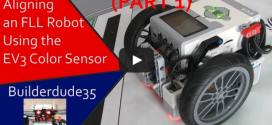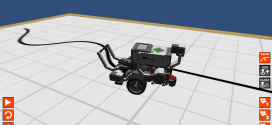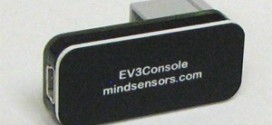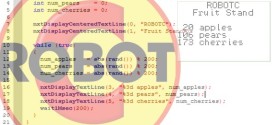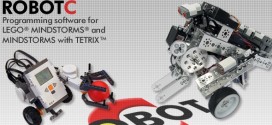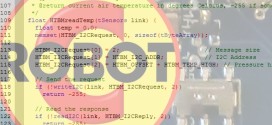If you’re an (aspiring) FLL participant or just someone who wants to learn some cool new programming tricks with their EV3, you may be interested in Kyle Markland, a.k.a. Builderdude35’s YouTube channel. He’s made a whole bunch of very useful videos. Here are two of them: There are many more: EV3 Robot Design: Building your FLL Robot EV3 Robot Design: ...
Read More »Virtual Brick: A First Look – Making a Line Follower
Robomatter has released a new product called the Virtual Brick. They have re-engineered the Virtual NXT and added new functionality, new blocks, improved robot performance, as well as a new interface to make the Virtual Brick much easier to use with the EV3. The “Brick” part is because it now works with both LEGO bricks; the NXT and EV3. What is the ...
Read More »Tutorial: Using the Mindsensors EV3Console in Linux
If you have the Mindsensors EV3Console and you’re keen to use it on Linux, you’ll find that it is not immediately detected by the drivers built-in to Ubuntu 13.04. Have no fear, though, it’s fairly easy to fix. The specific distribution used here is Ubuntu 13.04. If you’re using something else, you may need to tweak some path names and ...
Read More »Tutorial: Output formatting in ROBOTC
Aligning your fruit ‘n veg If you’ve ever had to output anything on the screen in ROBOTC, you’ve probably used nxtDisplayTextLine() or one of its many siblings. Your code may, or may not have looked something like this: task main() { int num_apples = 10; // how do you like them apples? int num_pears = 8; int num_cherries = 116; ...
Read More »Tutorial: Using ROBOTC’s new sensorCustom
With ROBOTC 3.59 came two new sensor types, the sensorCustom and the complimentary sensorCustom9V. This sensor type was introduced to allow the fast toggling of the dig0 and dig1 lines on the NXT’s sensor ports. Normally, these pins are either used for RS485, I2C or controlling the light on a LEGO Light Sensor. Up until now, you could not control ...
Read More »Tutorial: Linked Lists in ROBOTC
I really love data structures. That sounded a lot less geeky in my head, but it’s true. It was my favourite subject when studying computer science and I have a few good books on the subject. I don’t pretend to understand the math behind most of them. In any case, when ROBOTC implemented pointers, I started working on a little ...
Read More »Tutorial: Stacks in ROBOTC
Stacks are used a LOT in computing. The CPU in your laptop or PC, your mobile phone and iPad all have one thing in common, they all use stacks, without exception. So what is a stack you ask yourself? Well, think of what a stack of things is in real life: a pile of items that you can only add ...
Read More »Tutorial: Pointers in ROBOTC
Hurray, ROBOTC has support for pointers! “That’s nice,” I hear you say, “but what are they?” That’s a good question. I’ll try to explain in this tutorial. This tutorial is the first of a couple that will show you the kinds of things you’ll be able to do with pointers. Standard varables Up until now, ROBOTC only supported normal variables; ...
Read More »Tutorial: Sorting your Data
I was posed a question earlier this week: given an arbitrary English text, how would you pick out the 10 most common words? On the NXT, having a pile of sensor readings is nice but what if you need to pick the top 10 smallest or biggest ones? How would you go about doing that? There are no intrinsic functions ...
Read More »ROBOTC Driver Suite Tutorial
Finally, after months and months of stalling, I have started and completed a tutorial for my Driver Suite. It actually took me a lot less effort than I originally thought it would, but I am happy with the result, as I am sure you will be. The tutorial will help you setup ROBOTC to use the drivers, how the they’re ...
Read More » Bot Bench I'd Rather Be Building Robots
Bot Bench I'd Rather Be Building Robots
